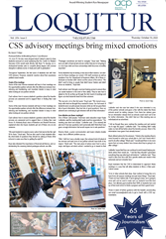More often than not, victims who choose to speak out about their experience with sexual assault are met with blame rather than compassion. As a result, most who suffer choose not to say anything at all, and this can lead to worsening cases of PTSD and other lasting effects from trauma.

In October of 2017, the #MeToo hashtag became a viral movement that inspired millions of women, and roughly 300,000 men, on multiple social media platforms, such as Twitter and Facebook, to speak up about their experiences.
The movement was started by activist Tarana Burke and was promoted by actress Alyssa Milano. Both encouraged women to tag #MeToo in their online posts if they have ever been sexually assaulted.
From there, women decided to share their personal experiences with others who had tagged, and this became a community for women, and men, to follow, to openly share and call out the guilty parties.
#MeToo is a movement that inspired so many because it ensured victims of something that therapists try continuously to get through to patients: “you are not alone.”
This is an aspect of social media that differs from how our society typically functions. Because there is no ‘mind your own business’ attitude or agenda tied to social media, people have more freedom to post about things they normally feel they could not talk about.
When the movement arrived, it sent sparks flying to 85 countries and taught everyone that it truly only takes one courageous voice to inspire so many others to share.
From a statistical standpoint, it is no wonder that the movement sparked such a response considering that on average, someone is sexually assaulted every 98 seconds. One in six women will be a victim of sexual assault in their lifetime, while one in 33 men will be a victim.
Despite this devastating phenomenon, social media has been the one source where victims have felt comfortable to come forward. Most cases of rape and sexual assault go unreported, and this is widely because of the stigma and blame put on victims who try to speak out.

In addition to creating a community, the #MeToo movement and the abundance of participation and support helped to expand the fight to the streets with the Women’s March.
Two marches have commenced to protest the rights of women, one in January of 2017 and the other happening a year after in January of 2018. Centered in Washington, D.C., every state in the United States participated, and other countries participated in related marches.
If there was ever a shining example of the influence that social media has had on women/victims to feel comfortable, and even empowered to speak out, it’s the Women’s March. The protest was organized entirely on social media and crossed through nations, which is something that would have been nearly impossible before this age.
The presence of social media has been able to break through social barriers and give victims an outlet to both share and thrive in a community, and fight for the change that they want to see in the society they live in.
By being able to do so, it has become a safe space for this generation; a platform for sexual assault victims, and a platform for justice in a society full of people content with “minding their own business.”


